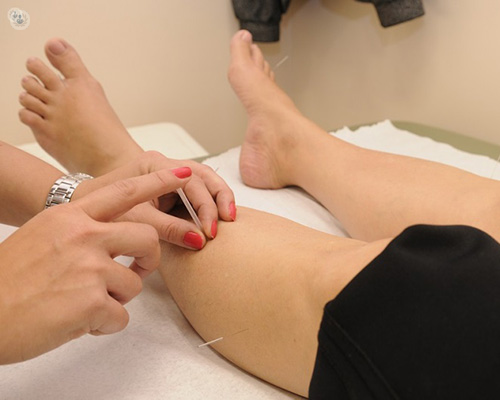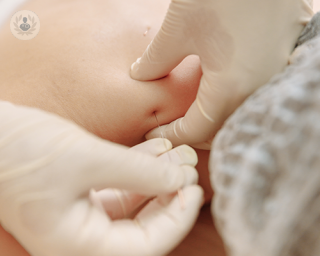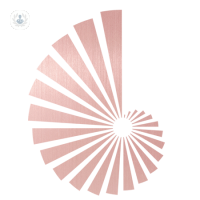Dry needling
Millie Lindsey - Physiotherapy
Created on: 12-16-2014
Updated on: 09-28-2023
Edited by: Jay Staniland
What is dry needling?
Dry needling is an alternative therapy which involves the placement of acupuncture needles being inserted into the skin and muscle, aiming for myofascial trigger points. These points are sensitive spots in soft tissue, sometimes referred to as ‘muscle knots’. Trigger points can be tender to the touch, and when a trigger point is touched it may cause pain to appear in other parts of the body. Dry needling is generally regarded as an alternative therapy, and is often done by a physiotherapist specialist.

Why is dry needling done?
Dry needling is often performed as part of a larger treatment plan and tends not to be recommended alone. Therapists use dry needling with the aim of releasing trigger points, thus relieving pain and in turn improving motion range and releasing muscle tension. Dry needling may provide relief for muscular pain/stiffness. It may be used in the treatment of muscle pain, sports-related injuries, and fibromyalgia pain.
What does it involve?
Dry needling is performed by inserting a thin needle into the skin, penetrating down to the muscle and connective tissues. The needle allows the therapist to reach different areas that they would not normally be able to reach through manual therapy. The technique is called dry needling as the needles do not release any fluid. The needles stay in the skin for a couple of minutes, where in acupuncture the needles stay in for a period of time (10-30 minutes).
How do you prepare for dry needling?
Make sure to research your therapist and, if necessary, the clinic where you will be undergoing the dry needling procedure beforehand. Check that your dry needling provider is a registered health professional before committing to any treatment.
Aftercare
Some mild side effects are associated with dry needling, including bruising, some bleeding, and soreness. These occur around the injection site and it is best to keep an eye on them to check that they heal properly. There are no serious side effects associated with dry needling.
Alternatives to this treatment
Dry needling is a technique in alternative medicine – similar to acupuncture. Therefore it should be considered as an alternative to conventional therapy and treatment in itself.
To find specialists in dry needling on the Top Doctors website, visit here.




